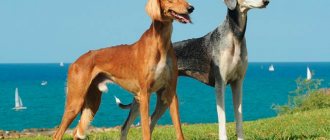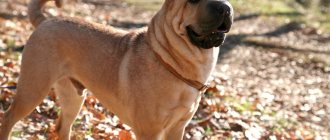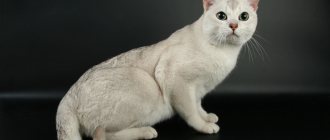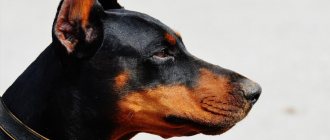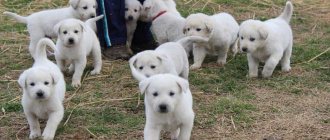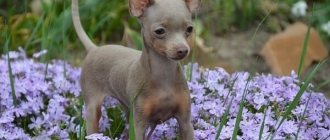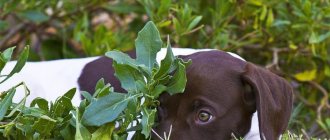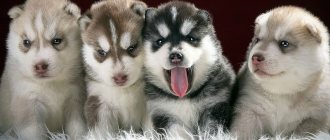| Origin: | Germany, early 19th century. |
| Usage: | universal type hunting dog. |
| Color: | brown, brown with specks. |
| Dimensions: | Height at the withers: males - from 62 cm to 66 cm, females - from 58 cm to 63 cm. Weight: males - from 25 kg to 32 kg, females - from 20 kg to 27 kg. |
| Lifespan: | 10 – 12 years. |
The name of the breed, kurzhaar, is literally translated from German as “short hair.” This dog is also often called the German Shorthaired Pointer or the German Smooth-haired Pointer. According to the international classification, the breed belongs to the group of pointers. It is registered with the Fédération Cynologique Internationale (FCI) under number 119. Related breeds are the Langhaar and the German Drahthaar.
Story
The pride of German dog breeders. Among the three hunting ones, he is recognized as the best. His descendants are the Württemberg Pointer and the Pointer.
The Germans carefully approached the breeding of these dogs. Attention was paid to physical qualities and the ability to bring prey and accurately carry out commands. In translation it means kurts - short, haar - hair. There are also other names for this breed - pointing dog, shorthaired pointer. They used dogs for hunting in those days when there were no firearms. The ability to sneak up on prey unnoticed was highly valued.
When they began to use it, the problem of finding game arose. When killing birds from a great distance, we had to get them from inaccessible places. Kurzhaar bravely threw himself into the cold water to catch game. In the 17th century, partridges were introduced from Spain. Together with the bird, an excellent hunter for them was brought to the lands of Germany - the dog Perdiguero de Burgos. These breeds were crossed.
The result exceeded all expectations. The animal became much stronger, without losing its agility, and was named the Old German Württemberg Pointer. A shorthaired pointer breeding club was created, a standard was written, and amendments were made. Improvement continues to this day.
Breeders are working to reduce the number of congenital diseases and preserve the dog’s working qualities. At the beginning of the 20th century, dogs came to the United States, where they were appreciated. The American shorthaired pointer is loved by hunters. Clubs for its breeding have been created. Short-haired cops came to Russia gradually. In the harsh conditions of the north, the husky was more often used.
Interesting facts about shorthaired pointers
Since 97 of the 19th century, Prince Albrecht Solms-Braunfeld has listed all the characteristic features of the breed in the “Studbook of the German Shorthaired Pointer”. The basics of judging and the rules of competitive tests are also collected there.
The spotted coloring of the shorthaired pointer, which ideally camouflages a dog in natural conditions, consists of a mixture of brown or black hairs with white ones, in addition to this basic background, the effect is enhanced by lighter speckles on dark-colored dogs, dark ones on light-colored dogs.
Shorthaired Pointers are often called a super breed because these dogs really can do anything. These are not only natural hunters and working dogs, but also excellent track and field athletes who love running and jumping, thanks to their posture, they do it very beautifully.
German cops on the hunt look for game birds, moving in a “shuttle manner.” The ideal innate stance is a visual aid for a novice dog handler: the dog seems to stretch out in a straight line from the nose to the tip of the tail, leaning forward, tucking its front paw.
A properly trained hunting pointer, after standing, moves forward on command, lifts the bird onto the wing, under the shot. After the shot is fired, the shorthaired pointer, on its own or on command, remains in place or lies down, and on command breaks away to bring prey or catch a wounded animal.
The shorthaired pointer has an innate ability to feed killed and wounded game. On a wading bird hunt, he alone can replace a dozen setters and collect all the killed birds or wounded animals. Water-repellent fur helps them not get wet and maintain body temperature even in cold water.
External data
The German Shorthaired Pointer (another name for the Shorthaired Pointer) is a rather remarkable dog. Males weigh approximately 25-33 kg, and females weigh between 20-26 kg. The height at the withers for the former is from 61 to 67 cm, and for the latter – from 57 to 64 cm.
The head has an oblong shape and is proportional to the body. The frontal side and the entire skull in general are quite wide and slightly convex. The muzzle, like that of all hunting dogs, is distinguished by its elongated shape, which makes it possible to grab game with its teeth and carry it. By the way, the muzzle itself is very strong. The jaws are strong, the chewing muscles are well developed. Teeth are strong and healthy. The indigenous ones are positioned so that they touch each other.
The nose has a slight hump. It can be upturned or slightly lowered. The nose is large in size and open in shape. As a rule, it has a brown tint. The nostrils are well opened and wide, mobile.
The eyes are very expressive, medium in size. Their shade can range from black-brown to light yellow. If in the latter case the eyes are too light, then the exhibition value of the representative of the breed is reduced.
The ears are set high and always drooping. They have an elongated shape, quite fleshy, and can even reach the mouth at the corners. The neck is proportional, not very long, but strong. The muscles in this place are well developed. The ridge at the top is slightly elongated; as it approaches the body, the neck begins to expand.
The Shorthaired Pointer dog breed has a square body. It is quite powerful and distinguished by harmony and proportionality. The chest is deep and the stomach is tucked. The back has a straight shape. It is wide and slightly convex in the area near the lower back.
The legs are muscular and strong. The front ones are distinguished by obliquely located shoulder blades, which is why they are close to the body. The humerus bones are slightly elongated. The hind legs are parallel to each other. The hips are very wide and strong. Overdeveloped shins have a bad effect on a dog's endurance during long walks. The fingers are clenched tightly. They are very strong and have a round or oval shape. The pads are quite hard. The claws differ in density.
The tail is of medium length. It is thicker at the base, but tapers towards the end. If the dog is calm, then it either hangs down or is positioned horizontally. When the dog is active (for example, looking for something), the tail moves. As a rule, it is stopped by half or a third. There are no folds on the body, and the skin is smooth and tight.
The color of the shorthaired pointer varies. There are several most common options. Among them are completely black and brown. Sometimes whitish spots appear. Experts believe that if there are yellowish tan marks on the fur, then such a dog will be good at sniffing out prey following a trail of blood.
Popular colors of shorthaired pointers
This breed has short, coarse hair that covers the entire body. On the head, ears, and lower part of the tail it is softer and shorter. The leather is wrinkle-free and fits well. The color of the shorthaired pointer can be variable.
According to breed description standards, the following are acceptable:
- Plain brown;
- Brown with slight white spots and speckling on chest and legs;
- Dark brown with specks and a brown head, the back of the tail and paws are lighter;
- Light brown with specks, brown head, brown spots all over the body;
- White with brown specks and the same markings on the head;
- Black with identical options as brown colors.
Considered acceptable in the breed standard:
- Tan with yellowness;
- There may be a white patch on the forehead;
- Small spots or specks on the lips.
The nose is brown. Black earlobe color is allowed in dogs with black or black-roan hair. In individuals with a basic white coloration, flesh-colored or unpainted lobe color is acceptable.
During the breeding of the breed, more attention is paid to hunting qualities, developed muscles, and sense of smell, but deviations in color will reduce its value for participation in exhibitions and for breeding. A pedigree for such a dog can only be issued with special notes.
Character
The shorthaired pointer is not only a hunter, but also a loving pet. The German Shorthaired Pointer is a gentle, intelligent dog that strives to please its owner. Dogs of this breed are very friendly and sociable and get along well with children, especially older ones. These dogs make excellent guard dogs as they are loyal and have a protective instinct. The shorthaired pointer needs attention and interaction from its owner and loves to be around its family.
An under-socialized and under-exercised shorthaired pointer may be aggressive, shy, or have other behavioral problems. This breed of dog has a tendency to be dominant and needs a strong, strong-willed owner who knows how to establish leadership and be in charge in the relationship with the dog. An owner who does not know how to be a boss will quickly turn into an uncontrollable pet. In general, the shorthaired pointer is a “one owner” dog.
Dogs of this breed are extremely intelligent. Intelligence combined with energy makes the Shorthaired Pointer a dog that should always be busy mentally and physically. Teaching even the simplest commands, such as sit, lie down, fetch, etc. occupies the dog's head and is satisfying, just like significant exercise.
If the shorthaired pointer grows up with other pets, dogs and cats, it will get along well with them as an adult. However, due to their hunting instincts, small pets are considered by dogs of this breed as objects for hunting or play.
The Shorthaired Pointer is a dog that does not tolerate loneliness well if left alone for a long time. This is one of the noisiest hunting dogs. Teaching the Shorthaired Pointer when barking is acceptable and when it is not should begin at an early age.
Video
* We invite you to watch a video about the Shorthaired Pointer . In fact, in front of you is a playlist in which you can select and watch any of 20 videos about a given dog breed by simply clicking on the button in the upper right corner of the window. In addition, the material contains quite a lot of photos. By looking at them you can find out what Kurzhaar looks like.
In this article:
|
Rate the material!
[Total votes: 0 Average: 0]
The shorthaired pointer is a short-haired pointer, the name speaks about this feature: it comes from the words - kurz - short, haar - wool. This super active, versatile hunting dog was bred in Germany.
Health of the shorthaired pointer dog
Individuals of this breed are characterized by good health and live up to fourteen years. Diseases of the German shorthaired pointer are most associated with hereditary defects that arose as a result of mating of owners of gene diseases. In general, the breed itself has a good immune system, since many generations that were chosen for mating were in excellent health. But since closely related lines had to be brought together subsequently, and mistakes could not be completely avoided, pointers with defects were rarely born.
One of the most unpleasant genetic defects is hip dysplasia. It causes abnormal development of cartilage tissue and can be detected before the age of two. An active pet gradually moves less, refuses to work and always tries to take a lying position. As a result, this condition gradually leads to painful movement of the dog and, ultimately, its immobility. Dysplasia is difficult to treat, but if the disease is detected in time, some improvement can still be observed.
Willebrandt's disease is another recessive defect, which manifests itself in partial incoagulability of the blood. If the bleeding time increases, there may be complications that lead to the death of the pet. It can be detected at an early stage using a blood test. Since it is recessive, that is, there are individuals who only carry the affected gene, but do not get sick. They are rejected and not bred. For the rest, symptoms are detected after reaching a year, and the prognosis is not reassuring.
A common problem for German Shorthaired Pointers is hereditary eye diseases. One of them is progressive retinal atrophy, which ultimately leads to loss of vision of the animal. Symptoms make themselves felt in the first years of a dog’s life. As a result, the dog completely loses central vision, but peripheral vision may persist for a long time. Treatment early can prolong the ability to see.
German Pointers are also affected by gastric volvulus. This is typical for many large canines. This condition is dangerous and requires immediate surgical intervention. To reduce the risk of its manifestation, the dog should be given food only after walking. In general, shorthaired pointers should not be offered excessive portions of food, and especially during periods of low activity. Excess weight is the “scourge” of urban apartment pets. The owners cannot provide the dogs with the necessary exercise and adequate walking, but they feed more than the workers.
You must make sure that your pet is protected from dangerous infections such as distemper and rabies. The cycle of vaccinations prescribed by the veterinarian must be strictly adhered to for the rest of your dog’s life. Until routine vaccinations have been completed, it is necessary to strictly limit the puppy’s interaction with its brothers, especially stray ones.
Most diseases are transmitted by parasites (ticks and fleas), so the Shorthaired Pointer can pick them up while walking. Buy an anti-parasitic repellent collar or use preventatives purchased at zoological pharmacies.
Treatment of hereditary diseases is difficult and extremely problematic, so breeders always monitor the health of their sires. The veterinarian carries out tests that identify individuals with health defects. But still, this does not guarantee the birth of completely healthy offspring. Professional kennel owners are obliged to warn future owners about defects in puppies, if any. In such cases, the cost of the dog will be much less.
But still, the risk of genetic diseases is very rare; most often shorthaired pointers get sick from inadequate rearing. The owner of the dog must adhere to the recommendations of the breeder and veterinarian regarding the composition of food, walking regimen, physical activity, and so on. If you pay due attention to the maintenance of your pet, this will guarantee a long, healthy life for your four-legged hunter. Shorthaired Pointers love active exercise, but up to a year, it must be strictly dosed.
Care and maintenance of the German Shorthaired Pointer
It was previously mentioned that Shorthaired Pointers do not show particular whimsicality in terms of care and maintenance. If you are raising a pet in an apartment or private house, then you need to arrange bedding in the room or closet. For normal development, the dog should be walked at least three times a day for 40-45 minutes. This is due to the energetic nature of the breed.
You need to wash your dog 2-3 times every two months. It is important to note that Shorthaired Pointers shed three times a year. At this time, it is necessary to thoroughly comb the animal with a special comb, and then wipe with a damp rubber glove.
The German shorthaired pointer is considered an excellent breed of dog with graceful external features, a reserved and loyal character, as well as excellent physical characteristics. But only with proper care and maintenance will you be able to unlock the full potential of this amazing breed.
Feeding
Many dog breeders prefer to keep their dogs on ready-made food. They prefer expensive super premium brands. They contain a balanced amount of proteins, fats, carbohydrates, and vitamins. If you decide to feed the shorthaired pointer at home with natural products, carefully consider the diet.
When picking up a puppy, they are interested in its feeding pattern. You should not suddenly change the diet and frequency of feedings to avoid digestive problems. As the child grows, the portion is increased, new foods are introduced, and the number of feedings is reduced. The basis of nutrition is protein products of animal origin - raw, boiled meat, offal.
A small puppy must receive dairy and fermented milk products - low-fat cottage cheese, milk, fermented baked milk, kefir. From the age of three months, the amount of dairy products is reduced. During the period of teeth change, it is useful to give cartilage and special bones from pet stores. Porridge is cooked in broth with the addition of chopped vegetables - carrots, zucchini, pumpkin.
Up to five months, the puppy is fed four to five times a day. By six months of age, the frequency of feedings is reduced to three. The bowl with the leftover food is immediately removed, and next time a smaller portion is served. If the puppy eats everything, does not leave the bowl, and continues to lick it for a long time, the portion is increased.
The diet of an adult dog is based on the recommendations of a veterinarian. Daily nutrition should contain all the necessary substances - proteins, fats, carbohydrates, fiber. The lack of vitamins is compensated for by special food additives. A list of recommended products is shown in the table.
Table - Natural nutrition of shorthaired pointer
| Product type | Featured | Unwanted and prohibited |
| Meat | - Beef; – veal; - chicken; – by-products; – cartilage | - Pork; - mutton; - duck; - goose; - sausages; - salo |
| Dairy | - Kefir; – low-fat cottage cheese; – natural yogurt; – ryazhenka | - Whole milk; – yogurt with fillings; – sweet, fatty cottage cheese |
| Porridge | – Oatmeal; – buckwheat; – rice; – barley | – Pearl barley; – semolina; – millet; – corn; – pea |
| Vegetables | - Carrot; – zucchini; - pumpkin; - tomatoes | - Potato; - green pea; – exotic vegetables |
You cannot feed a shorthaired pointer with food from your table. Dogs are harmed by sweets, smoked foods, salty, spicy, and fatty foods. The digestive system reacts sharply to chemical additives - preservatives, dyes. Spices and salt dull the senses.
Nutrition
Proper nutrition is of great importance for the dog's health and overall physical development. The dog is fed twice a day - morning and evening, at the same time every day. Food should be neither cold nor hot, but slightly warm (approximately + 12°).
The portion given should not be large so as not to overload the stomach. After work, food is given about an hour later, since in a tired dog the secretion of gastric juice is delayed and food remains undigested in the stomach for a long time.
It is harmful to let the dog work immediately after giving food, since even under this condition the stomach does not digest food well. The food must be fresh. Uneaten food is immediately taken away, since if it turns sour and the dog begins to finish it, it may develop a stomach illness. Food should be varied. The dog soon gets bored with monotonous food, it begins to digest it poorly, and the food loses its nutritional value.
We advise you to read: Bull Terrier Dog Breed
The dishes in which the food is given are washed daily in boiling water. The nutritional composition must contain the required amount of nitrogenous calories (protein) and nitrogen-free calories (carbohydrates and fat). In order for the food to have the required composition, it is combined from meat, various types of cereals (oatmeal, millet, buckwheat, etc.) and vegetables (carrots, cabbage, beets, potatoes, etc.).
For the female puppy and for the puppies, milk must be added to the food.
For an adult dog, the diet during work is approximately expressed in the following norms: meat - 400 g, cereals - 600 g, vegetables - 200 g; puppies from 1.5 to 3 months: meat -75-100 g, cereals 150-200 g, vegetables -50-75 g, milk - 0.5 l. During non-working hours, the norm of meat and grain indicated for adult dogs can be reduced by 100 g.
There are four main food groups (meat and fish, dairy products and eggs, grains and vegetables, fats and oils) that can provide the body with a wide variety of substances in varying quantities. The quality of any ingredient is determined not only by its composition, but also by its digestibility. For example, the protein value of food groups can be assessed: dairy/egg > meat/fish > vegetables/grains.
Grains are another important food source and include wheat, barley, oats, rice, rye, corn and some types of sorghum. Wheat, oats and barley contain more protein and less fat compared to corn and rice.
Training
Raising and training shorthaired pointers should begin as early as possible. These dogs are highly intelligent and amenable to training. If you don’t start raising a puppy on time, it will be quite difficult to correct.
Shorthaired Pointer training must be carried out following the basic rules:
- start training as early as possible and patiently achieve commands;
- pronounce commands briefly, clearly and calmly;
- if you have determined a ban for a dog, then never allow it to be violated;
- do not resort to deception to achieve a better result;
- work with the puppy systematically, without long breaks;
- reward with treats;
- lessons should not be too long so that the puppy does not get tired;
- do not resort to physical punishment.
After training in basic commands, the dog is taught the rules of behavior while hunting. The basic working qualities of Shorthaired Pointers are inherited, so a person is only required to reveal and strengthen them. From an early age, shorthaired pointers should be prohibited from hunting domestic animals. If you don't do this, problems may arise in the future. Shorthaired Pointer dogs do not show aggression towards people. If the shorthaired pointer feels that a person is unfriendly, he will bypass him.
Pros and cons of the breed
The very fact that the breed is numerous suggests that the shorthaired pointer’s advantages predominate:
- Versatile hunting abilities.
- Simplicity of content.
- Good health.
- Stable psyche.
Disadvantages that may scare you away:
- Hyperactivity.
- The need for a serious course of training and coaching.
For most hunters in mild and average climates, the Shorthaired Pointer seems to be the optimal choice of dog, unless hunting preferences and the nature of the land contradict this.
Breeding
Bitches reach sexual maturity at seven to eight months. Depending on individual characteristics, it may occur later – at ten months or a year. They approach breeding responsibly - they are first examined by a veterinarian, given anthelmintic drugs, and vaccinated. They carefully choose a male dog - study his pedigree, evaluate his health.
- In heat . The first estrus (estrus) begins at seven to eight months. At this age, the dog is not yet fully formed and is not ready to become a mother. The first mating is carried out on the third heat - at the age of one and a half to two years, from the tenth to the 16th day of emptying.
- Mating . For mating, the bitch is brought to the dog's territory. Mating is carried out under the control of the owners. It is recommended to have two matings in a row to increase the chance of pregnancy.
- Pregnancy . Lasts 60-64 days. The first half of pregnancy proceeds without pronounced symptoms. For a while, the dog may become lethargic and refuse to eat, but after a few days the condition will stabilize. From the second half of pregnancy, food portions are increased, the diet is enriched with vitamin supplements, and the duration of walks is reduced.
- Childbirth . Taken at home. If the owners do not have experience in giving birth, it is advisable to contact a veterinarian first.
The peculiarity of Shorthaired Pointers is that the bitch does not like to give birth in a permanent place. Immediately before giving birth, she will try to create a “nest” for herself under the bed or closet. After giving birth, she drags the puppies, hiding them from prying eyes.
Lifespan and reproduction
German cops live for about 13 years, of course, with good care. If you don’t vaccinate them and feed them poorly, they can serve no more than 10 years. Remember that the lifespan of a pet dog depends entirely on how well it is cared for.
A Shorthaired Pointer bitch is introduced to an adult male on the 3rd day from the start of her heat. During this period, their sexual instinct becomes more acute, so the chance of conceiving offspring is higher. If the female is pregnant, she should be given more protein (milk, cheese, cottage cheese).
By the way, her round tummy testifies to this position. He becomes like this within a week after mating. On average, pregnancy in Shorthaired Pointers lasts 65-70 days. There can be from 1 to 8 puppies in a litter, more often 4 or 6 are born. The sex of the dogs can be accurately determined after a couple of weeks.
How to choose a puppy?
If you want to become the owner of a healthy and harmoniously developed baby, do not purchase it from breeders with a dubious reputation. You should not go to bird markets, chasing a low price. This savings will later result in regular visits to the veterinary clinic.
Specialized nurseries are where you should go in search of shorthaired pointer. Pay attention to the gender of the baby: males are more willful and freedom-loving. Running away from under the owner's nose is not a problem for them. Males are less trainable due to their stubbornness, but it all depends on the character of a particular dog. Bitches, on the other hand, are more devoted and affectionate, and rarely feel the desire to follow an unfamiliar smell and leave their “father’s house.”
The ideal age to purchase a shorthaired pointer puppy is 2-6 months. The baby’s psyche is already quite stable, and problems with adapting to the new family will not arise at all. Before meeting the litter, ask the breeder to show the parents. Their shortcomings are most often reflected in their offspring.
When choosing a future pet, pay attention to the most playful and active puppy. Shiny fur, playful eyes, moderate fatness - all these are indirect signs that the baby will not end up in a veterinary clinic the next day. And, of course, don’t forget to listen to your own heart: it will never let you down!

